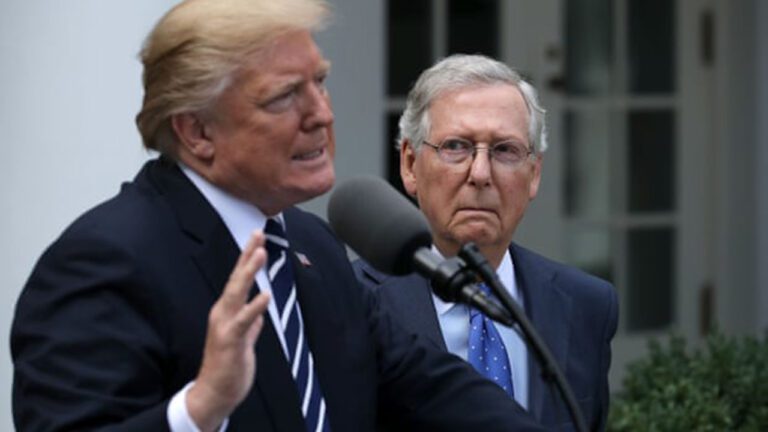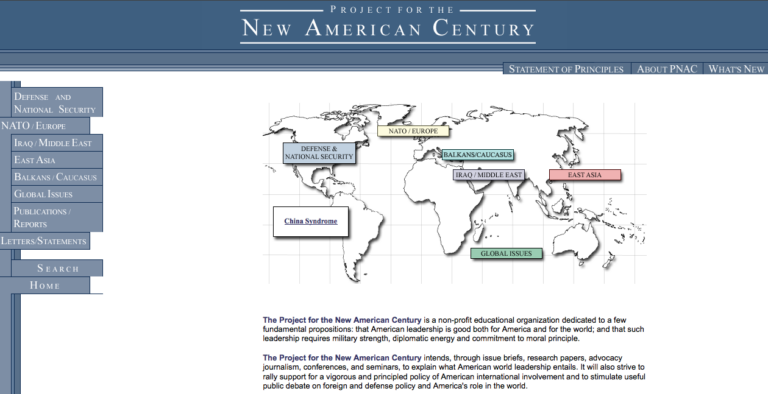The U.S. military still thinks that a nuclear war can be won by targeting Russian leadership in a bizarre Dr. Strangelove logic; it’s a recipe for unmitigated catastrophe, says Daniel Ellsberg on Reality Asserts Itself with Paul Jay. This is an episode of Reality Asserts Itself, produced November 4, 2018, with Paul Jay.
STORY TRANSCRIPT
PAUL JAY: Welcome back to Reality Asserts Itself. I’m Paul Jay. This is The Real News Network, and we’re continuing our discussion with Daniel Ellsberg. Thanks for joining us again.
DANIEL ELLSBERG: Good to be here.
PAUL JAY: I’ll just remind everyone that Daniel, in the early 1960s, worked for Rand Corporation. And as is the title of his book, The Doomsday Machine: The Confessions of a Nuclear War Planner, that’s what he was. He was planning nuclear war; had the highest security clearance. Of course, he was to discover that there was actual various levels of highest security clearance. Some, in some sense, almost didn’t even include the president, but we’ll get into that story. But one of the most critical things most people thought that was a sort of safeguard on the unleashing of nuclear war was only the president could do it. Only the president could actually push the button, and there was all this theater of a case being carried around wherever the president was with all the secret codes that could launch. And perhaps even the president thought so. But here’s a scene from a movie, Dr. Strangelove, where there’s a scene that is a little more real than perhaps people watching the film thought.
—
GEN. BUCK TURGIDSON: Mr. President, about 35 minutes ago General Jack Ripper, the commanding general of Burpleson Air Force Base, issued an order to the 34 B-52s of his wing, which were airborne at the time as part of a special exercise we were holding called Operation Dropkick. Now, it appears that the order called for the planes to attack their targets inside Russia. The planes are fully armed with nuclear weapons, with an average load of 40 megatons each. Now, the central display of Russia will indicate the position of the planes. The triangles are their primary targets; the squares are their secondary targets. The aircraft will begin penetrating Russian radar cover within 25 minutes.
PRESIDENT MERKIN MUFFLEY: General Turgidson, I find this very difficult to understand. I was under the impression that I was the only one in authority to order the use of nuclear weapons.
GEN. BUCK TURGIDSON: That’s right, sir. You are the only person authorized to do so. And although I hate to judge before all the facts are in, it’s beginning to look like Gen. Ripper exceeded his authority.
—
PAUL JAY: When Daniel Ellsberg and his colleague walked out of the theater after watching Dr. Strangelove, they turned to each other and said, “That’s a documentary film. That’s not a piece of fiction.”
Thanks for joining us, Daniel. And why was that a documentary film? Everyone understood only the president could push the button.
DANIEL ELLSBERG: Well, there are a number of things about the film, actually, that were quite esoteric from the point of view of the public. As you say, as you say, it had been understood, and to this day it’s pretty much understood that only the president could do that. People are very concerned now that the person who can do that is Donald J. Trump. And there’s widespread dismay about that, as well there should be. And people are asking the question whether he could be overruled if he made that decision. The answer is no, not constitutionally, not legally.
But what they don’t understand is that it’s never been the case that only the president could do that. And by the way, it’s never been the case that there were no other people in this system who were at least as impulsive or radical or screwy as President Donald J. Trump. I’m sorry, it happens. As in the film Dr. Strangelove, my friend, my boss Harry Rowland, and a Deputy Assistant Secretary of Defense, who saw that with me both … We agreed that we could almost recognize some of the people in that film, having met General LeMay and others, for example.
PAUL JAY: LeMay is Dr. Strangelove?
DANIEL ELLSBERG: Curtis LeMay. Well, no, he wasn’t. He was Buck Turgidson, I would say, the Chairman of the Joint Chiefs, or Jack D. Ripper, to a certain extent, as a wing commander who sends the planes off on his own.
PAUL JAY: This is a guy that goes-
DANIEL ELLSBERG: That almost could have been Thomas Power, the later head of the Strategic Air Command.
PAUL JAY: In the movie, for people that haven’t seen it, this is a base commander who goes nuts, and on his own decides to launch the war.
DANIEL ELLSBERG: Now, Power, by the way, was thought by some of his subordinates when he was head of the Strategic Air Command to be essentially unbalanced, which is not the way they thought of Curtis LeMay. He was even described as a sadist by people who worked under him, to some extent. And they were among perhaps very few people who ever really thought that a nuclear war with Russia would be good for the world, that we would come out victorious and we would have settled the Russian, or Soviet, or Communist problem. That was a very, a very small number of people who ever believed that, and they were mostly, I think, apostles of General Curtis LeMay.
PAUL JAY: And the war planning had a lot of those kinds of assumptions, that a war kind of could be winnable, in some weird context.
DANIEL ELLSBERG: Actually, I’ll tell you- this is quite relevant, actually, in a way. The first point you were asking me about, the question who else could push the button.
PAUL JAY: And how did you find this out, that it wasn’t just the president?
DANIEL ELLSBERG: The answer was that I was told in the Pacific. I was part of a task force, a research group, looking into command and control of nuclear forces in the Pacific under the Commander in Chief Pacific, CINCPAC, Admiral Harry D. Felt. And his particular interest was to assure that an execute order, a launch order, would get out despite, perhaps, atmospheric problems, and despite perhaps enemy efforts to disrupt that. But I also looked into especially the problem of could the order go out without the president having determined that? Or perhaps even without Admiral Felt having determined? And what I found was absolutely.
On the latter point, by the way, I discovered that the supposed “two-man rule,” which we hear about to this day, that nothing can be done with respect to the launch of nuclear weapons that doesn’t have confirmation by at least two people, as in launch control centers or anywhere else. And what I found was that the rule, that the procedures to enforce that, such as having two separate safes with two parts of an execute code, one part in each safe so that only one officer at a time could know half the code, was invariably violated. They all had both halves of the code in case one of them was sick, or visiting the PX at that moment, or health, or whatever reason. They ensured that they could get that order out without having to wait for two people. There were other forms that that took, but the supposed two-man rule was basically a myth. On the other hand, the one-man rule, the notion that only the president can do it, turned out also to be a myth. What I learned was that- I was told that Admiral Felt had received a letter from President Eisenhower authorizing him, if communications were out with Washington, or if the president were incapacitated- like in the small case, in the command post, if the boss or somebody else is sick- the theater commander, Commander in Chief Pacific, could launch the weapons on his own if he felt it necessary in a crisis. He was about to be attacked, or the war was starting, or whatever.
Now, in those days, before communications satellites existed, I think, or certainly were common, communications were out part of every day between Washington and Hawaii, where Felt was. And that meant that for some significant part of every day, the Commander in Chief Pacific was on his own, in- perhaps in terms of a crisis, such as the Offshore Islands, the Quemoy-Matsu crisis of 1958, which was just a year before I was investigating this for CINCPAC. Then I learned that the Commander in Chief Pacific had, in turn, delegated for the same reason to lower commanders, like 7th Fleet in WESTPAC, Western Pacific. For the same reason, as I say. Again, communications were lost between Hawaii and Western Pacific or Korea part of every day, on this. And so you had to assure, as they saw it, that the of the order would get out despite an atmospheric disturbance, or cutting of a cable, as had happened at various times.
So there were many fingers on the button, essentially, that could do this, and no locks at that time. That came much later. The image the public has had, I think, up to this point is that the president’s so-called football, the briefcase that contains, allegedly, codes and options, they think of those codes as like the lock on a combination lock without which the weapon can’t be fired. That’s not true. The codes we talk of, the president codes in that briefcase, are authentication codes assuring that the person receiving it knows this is the president, or the boss, and whoever, and enables him to give the order; to be one of those who can give the order. It’s in no way necessary for that order to have that code for the order to go out at a lower level. And that’s always been true.
Now there’s a reason- that turned out to be true, what I was told. And I, in fact, I informed McGeorge Bundy, President Kennedy’s National Security Assistant, of that situation in late January, 1961. He didn’t know of it, and he alerted the president to this. I investigated it for him, to pin that down. Kennedy renewed the order rather than, as I was told, reverse the order of the great General by Lieutenant Kennedy, which is his rank in World War II.
PAUL JAY: But when Kennedy becomes president he’s not briefed that this is the case?
DANIEL ELLSBERG: Well, he was briefed by McGeorge Bundy after I briefed McGeorge Bundy. But Bundy had not known this, no, and might not have for some period had I not brought it to their attention. It was very closely held inside the Defense Department. Many people did not know it. But in the high chain of command, of course, they did know that this was possible. It was true not only for CINCPAC, but for the other commanders who had control of nuclear weapons, and they, in turn, had delegated.
So it was- the button has always been quite widely distributed, and it’s almost surely true in most of the other nuclear weapons states, if not all of them. Otherwise a single warhead on the capital, or on the main command post, or in a few command posts, a few weapons, could paralyze retaliation. The idea of deterrence is said to depend on the possibility that you would respond. But the notion that you could paralyze the opponent’s force by hitting his command or communications at the top would pretty much nullify deterrence. It’s called decapitation. And our own plans depended on doing that to Moscow, and always have. So have the French, and the British, from the very first. They don’t have even the pretense of disarming Russia. Their main focus has always been Moscow. The decapitation attack, and so forth.
Now, Moscow’s response to that, ultimately, was the same as ours. They developed, as I tell in the book, discovered by Bruce Blair and others during the period of glasnost in the Soviet Union under Gorbachev, that they had arranged that if Moscow were destroyed, a rocket would go up, allowing and authenticating a launch order to go either directly from other distributed command posts in mountains, caves, elsewhere in the Soviet Union, or even directly to the missiles. There was a plan for that, though it wasn’t instituted. But during a crisis, definitely, if we hit Moscow it would not paralyze them any more than it would have with us. That seems logical enough if you’re depending on assuring an attack in the event of an attack. But of course, it allows for the possibility of accidental unauthorized war at any time.
PAUL JAY: In his book The Doomsday Machine, Daniel Ellsberg says the decapitation strategy still presents a great danger. He writes:
“Ten days after President Trump’s inauguration in 2017, Pravda quoted his statements that ‘the United States should strengthen and expand the nation’s nuclear capacity,’ and ‘Let it be an arms race.’ Pravda then reported that ‘Not so long ago, the Russian Federation conducted exercises to repel a nuclear attack on Moscow and strike a retaliatory thermonuclear attack on the enemy. In the course of the operations, Russia tested the Perimeter System, known as the ‘doomsday weapon’ or the ‘dead hand.’ The system assesses the situation in the country and gives a command to strike a retaliatory blow on the enemy automatically. Thus, the enemy will not be able to attack Russia and stay alive.’”
Ellsberg writes: “What has not changed is American preoccupation with threatening Russian command and control … The National Defense Authorization Act for Fiscal Year 2017, passed with bipartisan support and signed by President Obama on December 23, 2016, included a provision which mandated a report by the Office of the Director of National Intelligence and the Strategic command on ‘Russian and Chinese Political and Military Leadership Survivability, Command and Control, and Continuity of Governmental Programs and Activities.’ This provision of the law called for the U.S. Strategic Command to ‘submit to the appropriate congressional committees the views of the Commander on the report … including a detailed description of how the command, control, and communications systems’ for the leadership of Russia and China, respectively, are factored into the nuclear war plan.
Ellsberg writes: “The Pravda news stories quoted above, both appearing in the second week of the Trump administration, were explicitly responding to these provisions of this law signed a few weeks earlier in their explanation of the continuing need for Perimeter. Such plans and capabilities for decapitation encourage—almost compel—not only the Perimeter system, but Russian launch on (possibly false) warning: either by high command (in expectation of being hit themselves imminently, and in hopes of decapitating the enemy commanders before they have launched all their weapons) or by subordinates who are out of communication with high command and have been delegated launch authority.
“As General Holloway expressed it in 1980, he had confidence that with such a decapitating strategy, a U.S. first strike would come out much better for the United States than a second strike, to the point of surviving and even prevailing. He was right about the hopelessness of the alternative forms of preemption. But in reality, the hope of successfully avoiding mutual annihilation by a decapitating attack has always been as ill-founded as any other. The realistic conclusion would be that a nuclear exchange between the United States and the Soviets was—and is—virtually certain to be an unmitigated catastrophe, not only for the two parties but for the world. But being unwilling to change the whole framework of our foreign and defense policy by abandoning reliance on the threat of nuclear first use or escalation, policymakers (probably on both sides) have chosen to act as if they believed (and perhaps actually do believe) that such a threat is not what it is: a readiness to trigger global omnicide.
And for those of us who don’t know the definition of ‘omnicide,’ it’s the total extinction of the human species as a result of human action.






